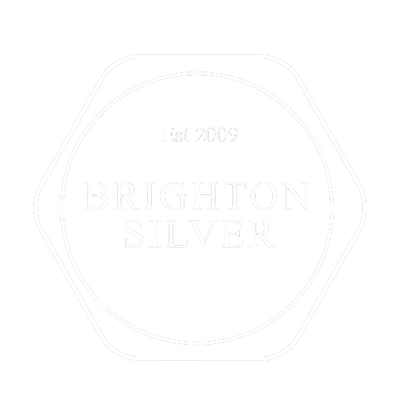The Claddagh Ring
There is no better time of the year to tell you the story of the Claddagh ring. With Valentines day just around the corner on 14th February, our team member Georgi writes about the legends and symbolism associated with it.
The legend
There are a few legends tied to the origin of the Claddagh ring.
The first is of an Irish prince who fell in love with a common maid. To prove to the girl's father that his intentions were honest he designed the Claddagh ring and once the symbolism was explained, her father gave his blessing and the pair were married.
The second legend is of Margaret Joyce of the Irish Joyce clan, who after inheriting a large fortune from her first husband, a wealthy Spanish merchant, returned to Ireland and married the mayor of Galway. Using her considerable fortune she funded the construction of bridges within Connacht and as a reward for her charity an Eagle flew past one day and dropped a gold Claddagh ring into her lap.
The third and possibly the one nearest to the truth relates to another member of the Joyce clan, Richard Joyce. Born in Galway, he left his home town heading for the West Indies in search of work, intending to marry his childhood sweetheart on his return. During the voyage the ship he was sailing on was captured by pirates and he was sold as a slave to a Moorish Goldsmiths. Recognising Joyce’s talent as a goldsmith his master made him an apprentice and taught Joyce how to become a Master Goldsmiths. When William III became king of England, some 14 years later, he demanded the release of all English slaves and Richard Joyce was finally a free man. The Goldsmith had such great respect for Joyce he offered him his daughter's hand in marriage and half his fortune but Joyce, still in love with his sweetheart, refused and made his way back to Ireland. On his return, and finding that his sweetheart had waited faithfully for him, he proposed with a ring that he made during his time in captivity, the Claddagh, symbolising his love and loyalty for the woman he had left behind so long ago.
The history
The true history of the Claddagh and its origins have unfortunately been lost to sands of time but the Claddagh belongs to a group of European style rings called ‘Fede rings’ which derive their name from the Italian phrase ‘Mani de fede’ which translates as ‘Hands (joined) in faith/loyalty’. This style of ring has been around in various forms since Roman times but the Claddagh ring is undoubtedly the most famous of all. Although the term ‘Claddagh’ seems to date from around 1830 the ring has been produced in its current form since 1700 in Galway, Ireland and its name is taken from what was then, a small fishing village on the outskirts of the City where it is believed to have originated from.
The symbolism
The Claddagh’s design has become steeped in symbolism and although a relatively new tradition has caught on across the globe and has become a symbol of Irish tradition and ancestry. Some families have rings that are passed down from mother to daughter. Some are purchased as a sign of friendship, others as engagement or wedding rings.
The ring's design is often said to correspond with the qualities of love (the heart), friendship (the hands), and loyalty (The crown).
There are also traditions in the way the ring should be worn depending on the relationship status of the wearer. If single and looking for love the ring should be worn on the right ring finger with the heart facing outwards, yet worn on the same hand with the heart facing inwards signifies you are in a relationship. Once you are engaged the ring should be moved to your left ring finger and worn with the heart facing outwards and once married you turn the heart inwards. There are other localised and oral traditions about which way the heart sits but this is by far the most popular. The same can be said for the quotes and wishes associated with the Claddagh ring, our favourite being: Let Love and Friendship Reign.
Our own Claddagh ring comes in a variety of stones, all of which can be found here.
Also in News

My Impressions - Jules

My Impressions - Leon

Why is Brighton special? - Ronel
Brighton has many things going for it. Most of all, for me, would be its diversity. The colleges and universities bring many students to the city each year, which means there is always a flow of new people, ideas, and interests.
Follow
Brighton Silver
9 Kensington Gardens
Brighton, East Sussex
BN1 4AL, England
t: 07849 786545
e: info@brightonsilver.com
- Refund Policy
- Shipping Policy
- Privacy Policy
- Giveaway Terms & Conditions
- Terms of Service
- About Us
- Contact Us
Sign up to our mailing list to receive exclusive offers
© 2025 Brighton Silver.
Website designed by Nerida Digital.




